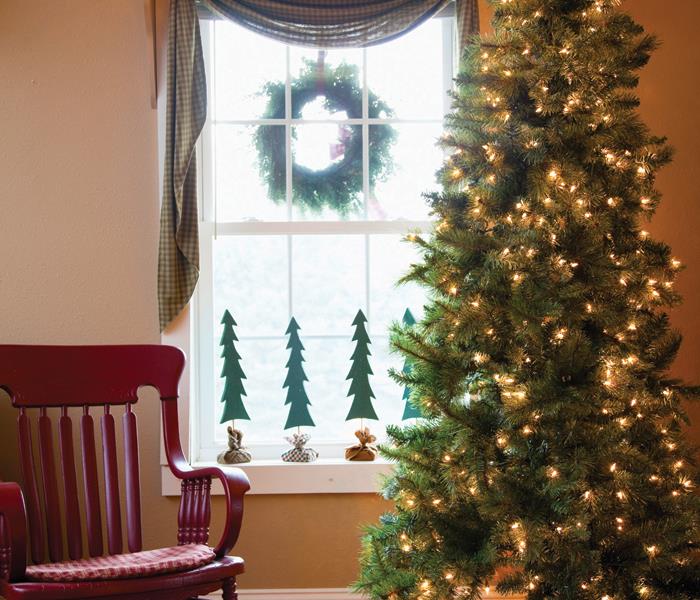Celebrate with safety in your Thomasville home this holiday season
12/6/2017 (Permalink)
Christmas trees are a beloved staple of the holiday season. Whether you prefer a freshly cut tree or an artificial alternative, the day a Christmas tree is brought home or erected is when many people truly grow excited about the holiday season and begin to be overtaken by holiday cheer. But as beautiful and inspiring as Christmas trees can be, it's important that men, women and children exercise caution around trees so no accidents occur. The following are some Christmas tree safety tips courtesy of the National Fire Protection Association.
* Choose the right tree. The tree you choose can go a long way toward ensuring the tree will make it through the season accident-free. Artificial trees should be identified on their labels as fire retardant, which means they are less susceptible to fire, something that's especially important since so many people drape their trees in decorative lights. A freshly cut tree should have fresh, green needles that do not fall off when the tree is touched. This indicates that the tree is not dried out and less susceptible to catching on fire.
* Do not place the tree near a heat source. Even freshly cut and flame retardant trees can catch fire, so it's important that trees are not placed in close proximity to any heat sources, including fireplaces, radiators, heating vents, baseboard heaters, and candles. In addition, avoid placing the tree near lights or lamps that emit a lot of heat.
* Keep the tree clear of exits. A Christmas tree should never be placed in a spot that bars an exit. Should an accident happen and the tree light on fire, all exits should be easily accessible so residents and guests can quickly get out of the home. * Add water to the tree stand every day. Water should be added to the tree's stand every day. That water will not only help the tree maintain its color and aesthetic appeal, but also helps to prevent the tree from drying out. A dry tree is a significant safety risk, so be sure to check if the tree needs water when you wake up each morning and again before going to bed. Many trees initially need water both in the morning and at night. As the holiday season wears on, the tree will likely consume less water, but it's still best to monitor the stand's water levels every day until the tree is discarded.
* Inspect lights before decorating the tree. All Christmas lights should be inspected before they are hung on the tree. Replace any loose or burned out bulbs, and inspect cords to make sure they are not worn down or frayed. Follow manufacturer instructions carefully when stringing lights, as there may be specific guidelines as to how many strings of lights can be connected at one time. * Use appropriate lights. Many lights are exclusive to indoor or outdoor use, so be sure to use the appropriate lights for your indoor tree. The wrong lights could be a safety hazard. Do not hang lit candles on a Christmas tree.
* Turn lights off before going to bed. Though a Christmas tree may look beautiful when it is illuminated in the middle of the night when no other lights are on, the lights on the tree should always be turned off before going to bed or leaving your home.
* Properly discard the tree. Trees that have dried out pose a considerable fire risk, so it's best to discard a tree when it starts to drop needles. Do not place a discarded tree in the garage or lean it up against your home. If necessary, consult a local recycling company to determine the best way to discard your tree.





 24/7 Emergency Service
24/7 Emergency Service
